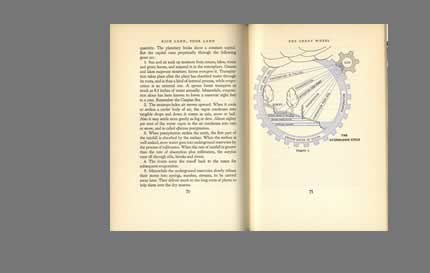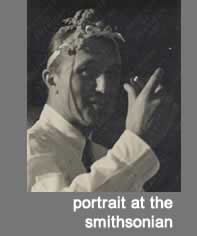This exercise started as a celebration of the best endpaper map I know of, for Stuart Chase's Rich Land - Poor Land of 1936. Looking more carefully than is usual, I noticed that the graphic display of information is by Henry Billings who I had encountered as a Murallist in the 1930's (1901 - 1987). He was responsible for de Toqueville's Visit for Wappingers Falls New York, and Winter Sports for Lake Placid, New York
TIME in February 1931 wrote of Billings, "Landscape gardeners, trapezists, mural painters and elephant trainers have this in common: they need a great deal of space to exhibit their wares. Mural Painter Henry Billings of Manhattan solved the problem last week by obtaining the use of a whole vacant floor in the modernistic new Squibb Building to show his designs.
The press was enthusiastic. Henry Billings' pictures average about ten by six feet apiece, all are based on modern machinery, are intended as projects for murals in factories, skyscrapers, air terminals, railway stations as yet unbuilt. It is the Billings theory that colorful, firmly-painted abstractions, based on worm-gear drives or air-cooled radial engines, six-cylinder motors, steam engines, are more suitable for modern buildings than nymphs, satyrs or noble Red Men standing on the site of Number Six smelter. Even the most cautious critics admitted last week that the Billings murals were different, decorative. Artist Billings's good friend Murdock Pemberton of The New Yorker went further, called them "as thrilling as anything in town at present."
Large, slightly morose Henry Billings is 29, a grandson of Civil War Surgeon John Shaw Billings, who was first director of the New York Public Library. Educated at St. Paul's School, he was considered in sufficiently intelligent to be graduated. He studied painting at the Art Students' League, worked in architects' and engineers' offices in New York. A member of the picturesque Woodstock, N. Y. summer colony, he lives as far as possible from the clanking, roaring machines he glorifies.
Muralist Billings realizes the most obvious objection to his machine murals. Says he: 'The man who uses machines or is conscious of their use all day long, would like to forget that they exist during his periods of relaxation. He has yet to realize that it is impossible to forget them since :hey have become part of his life, just as the food he eats and the clothes he wears have become part of it.'..." |












